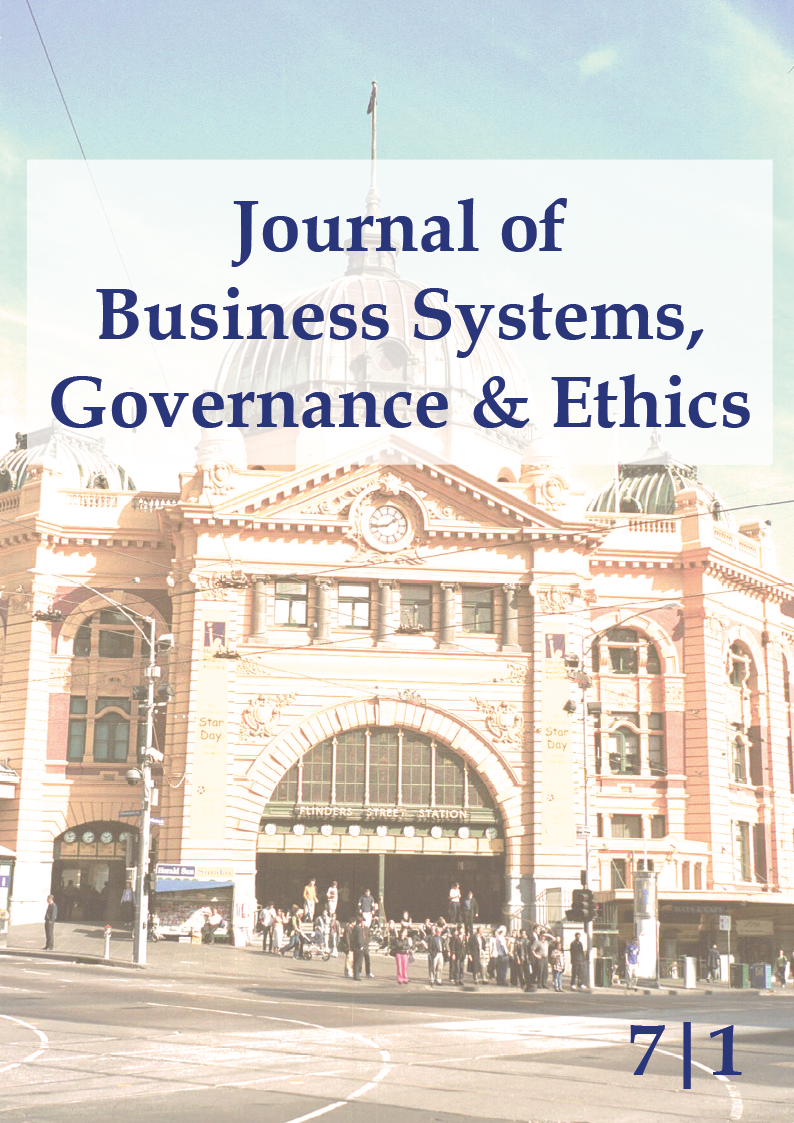Determinants of Business Exits in Australia
DOI:
https://doi.org/10.15209/jbsge.v7i1.212Abstract
The annually increasing firm exits have significant financial, legal and social impacts on productivity, employment and economic growth in Australia. However, evidence of the impacts of firm exits is sparse. This paper undertakes a first-ever study that empirically investigates the determinants and their impacts on firm churn. This paper is innovative to the literature in four aspects: (1) Local Region Areas (LGAs) data, rarely available in other countries, has been used for the analysis; (2) using LGAs as the basic analytical unit is able to eliminate the heterogeneity problems encountered by other studies which are based on national and cross-national data; (3) panel data modelling techniques identify robust evidence; (4) systematic statistical tests guarantees the robustness of the results. The dataset, provided by Australia Bureau of Statistics, include 3462 observations of 577 Local Government Areas (LGAs) during 2004-2009. The research identifies variables positively and negatively affecting the exits and finds that size matters in determining business exits. The last section concludes with a discussion of limitations and future research directions.
Downloads
Published
How to Cite
Issue
Section
License
Authors who publish with this journal agree to the following terms:- Authors retain copyright and grant the journal right of first publication with the work simultaneously licensed under a Creative Commons Attribution License that allows others to share the work with an acknowledgement of the work's authorship and initial publication in this journal.
- Authors are able to enter into separate, additional contractual arrangements for the non-exclusive distribution of the journal's published version of the work (e.g., post it to an institutional repository or publish it in a book), with an acknowledgement of its initial publication in this journal.
- Authors are permitted and encouraged to post their work online (e.g., in institutional repositories or on their website) prior to and during the submission process, as it can lead to productive exchanges, as well as earlier and greater citation of published work (See The Effect of Open Access).


